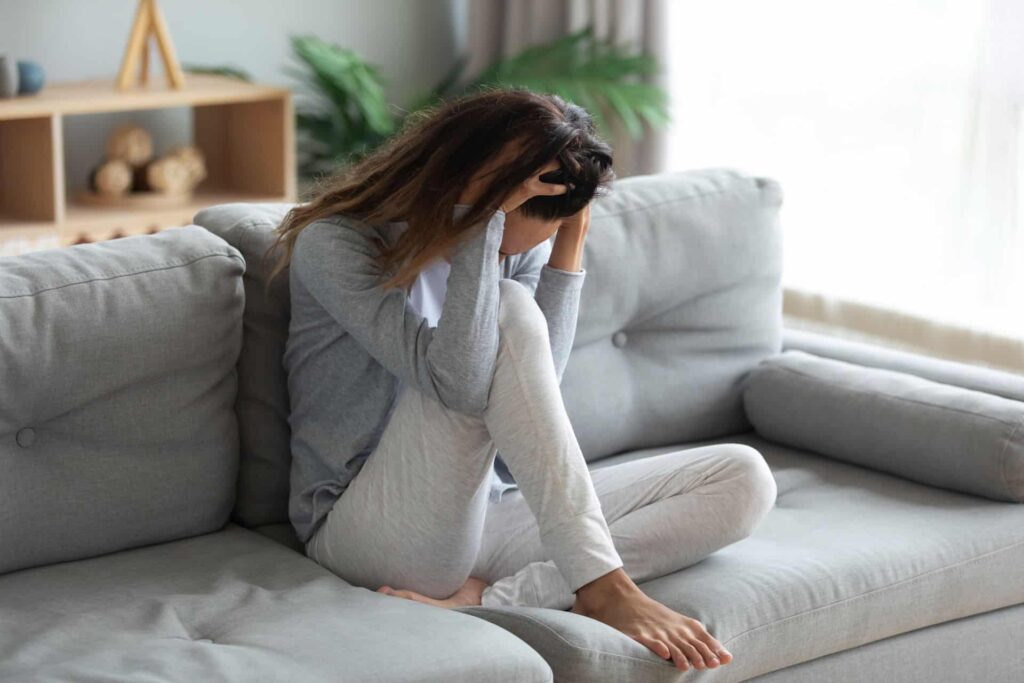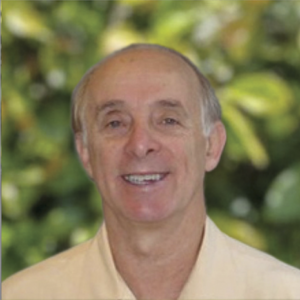Anxiety and Suicide: Recognizing the Warning Signs
 Anxiety and suicide are two serious and interrelated mental health issues that can profoundly impact a person’s life. Anxiety is a feeling of unease, such as worry or fear, that can range from mild to severe. Various factors, including genetics, environment, and life events can cause it. Anxiety can be in many different forms, including generalized anxiety disorder (GAD), panic disorder, social anxiety disorder, and specific phobias.
Anxiety and suicide are two serious and interrelated mental health issues that can profoundly impact a person’s life. Anxiety is a feeling of unease, such as worry or fear, that can range from mild to severe. Various factors, including genetics, environment, and life events can cause it. Anxiety can be in many different forms, including generalized anxiety disorder (GAD), panic disorder, social anxiety disorder, and specific phobias.
Suicide, on the other hand, is the result of complex and interacting factors, including mental illness, substance abuse, trauma, and life stressors. It is a major public health concern and a leading cause of death worldwide. People who are struggling with suicidal thoughts often feel hopeless and helpless. They feel like their problems will never be solved and their pain will never go away.
If you are feeling overwhelmed, anxious, and fearful, know that you are not alone. Anxiety and suicide are life-threatening but, nowadays, considered common and manageable. Learning to recognize the warning signs is important to better understand why you feel the way you do.
At 449 Recovery in Mission Viejo, California, we treat people with anxiety and suicidal ideation, and help them receive the treatment they need to recover.
This article will discuss the various types of anxiety disorders, their effects on one’s health, and treatments for managing them effectively. We’ll also cover suicide statistics related to anxiety—and what you can do if you have symptoms of an anxiety disorder and suicidal thoughts.
Types of Anxiety Disorders
With 40 million people affected each year, anxiety disorders are known to be the most prevalent mental illness in the US. It is typically accompanied by fear and worry, which can affect an individual’s daily activities and long-term health.
There are many types of anxiety disorders such as generalized anxiety disorder (GAD), panic disorder, social anxiety disorder, agoraphobia, specific phobias, OCD, PTSD, and separation anxiety disorder. The five major types are as follows:
This type of anxiety disorder is characterized by persistent, excessive, and unrealistic worry about several everyday things such as work or school performance, finances, family health, or safety. People with GAD may worry even if there is little or nothing to provoke the anxiety.
Recurrent, unwanted thoughts (obsessions) and/or repetitive activities are characteristics of obsessive-compulsive disorder (OCD), an anxiety disorder (compulsions). In an attempt to stop obsessive thoughts, people frequently conduct repetitive actions like hand washing, counting, checking, or cleaning. However, engaging in these so-called “rituals” only temporarily reduces anxiety, while avoiding them significantly increases it.
Panic disorder is an intense feeling of fear or discomfort that often comes on suddenly and unexpectedly. It can cause physical symptoms like accelerated heart rate, shortness of breath, chest discomfort, dizziness, and more. Panic attacks can also be recurrent – often leading to dramatic lifestyle changes due to avoidance behaviors from anticipating another attack in the future.
This is characterized by persistent symptoms that develop after exposure to a traumatic event, such as combat, natural disasters, or physical or sexual assault. Symptoms can include intrusive memories, nightmares, avoidance of reminders of the traumatic event, and emotional numbing.
Social Anxiety Disorder, also known as social phobia, is a type of anxiety disorder characterized by intense fear or anxiety in social situations. People with a social anxiety disorder may feel embarrassed, self-conscious, or fearful of being judged or evaluated negatively by others. As a result, they may avoid social situations or engage in them with significant distress.
If left untreated, people with anxiety disorders may engage in avoidance behavior that may eventually make symptoms worse over time. Therefore, it’s necessary to seek help from a mental health professional if you’re experiencing any of these disorders.
Symptoms and Effects of Anxiety Disorders
Anxiety disorders have both psychological and physical effects. Some of the most typical symptoms and effects of anxiety disorders include:
People with anxiety may experience a wide range of physical symptoms, such as:
- Shortness of breath
- Unexplained fatigue
- Rapid heart rate or palpitations
- Muscle tension or aches
- Dizziness or feeling faint
- Sweating, trembling or shaking
- Nausea, abdominal pain, or frequent urination
- Headache or chest pain
In addition to physical symptoms, people with anxiety may also experience:
- Feelings of panic, dread, or uneasiness
- Feeling overly alert and restless
- Difficulty concentrating and focusing on tasks at hand
- Impairment in social activities and relationships due to fear and avoidance behaviors
- Fear that something terrible will happen if certain things are not done a certain way
Treatment Options for Anxiety Disorders
If you feel like you have an anxiety disorder, you don’t have to feel helpless. There are many different treatment options available that can help. Here are a few possible options:
CBT is a therapy that gives you the tools to identify and change destructive patterns of behavior and thought-causing anxiety. It helps you become aware of underlying problems, manage negative feelings, and overcome irrational fears.
Exposure therapy is a type of therapy that helps people confront their fears in a safe environment so they can learn how to manage their reactions to stressful situations. As people face increasingly difficult challenges, they understand that their irrational fears are not as severe as they originally thought them to be.
Under the supervision of your doctor, medication may be prescribed in certain cases to subdue symptoms of anxiety disorders and make daily living easier. Medications may include antidepressants, antianxiety drugs, beta-blockers, or other types of medications depending on the diagnosis and individual needs.
The most important step is to reach out for help. Start seeing your healthcare provider or a mental health professional to see which treatment is best for your situation. Our healthcare team from 449 Recovery is always readily available for assistance. Get the best help today!
The Connection Between Anxiety and Suicide
Suicide is a serious threat to those suffering from anxiety, and unfortunately, the statistics are eye-opening. According to The Anxiety and Depression Association of America (ADAA), more than half of people experiencing anxiety have thought about suicide, and as many as one in 10 attempts it. Additionally, the Centers for Disease Control and Prevention (CDC) report that suicide is the 12th leading cause of death in the United States.
Anxiety Statistics:
- Between August 2020 and February 2021, the percentage of individuals reporting recent symptoms of an anxiety or depressive disorder increased from 36.4% to 41.5%. The percentage of adults who say they have unmet needs for mental health care increased from 9.2% to 11.7%. The largest increases were among adults with less than a high school diploma and those between the ages of 18 and 29.
- According to the ADAA, women are twice as likely as males to receive a lifetime diagnosis of an anxiety condition.
Suicide Statistics:
- According to the Centers for Disease Control and Prevention (CDC), 45,979 Americans committed suicide in 2020, marking it as the twelfth most common cause of death in the country.
- In 2020, there were an estimated 1.20 million suicide attempts with 130 average suicides per day.
- According to a survey, 93% of American adults believe that suicide attempts can be prevented.
Given the growing number, it’s critical to keep in mind that suicide prevention involves more than just obtaining care for oneself; it also entails identifying when others may need assistance. If you know someone who is experiencing suicidal thoughts or an anxiety problem, reach out for assistance right away.
Dealing With Suicidal Thoughts and Mental Health
If you’re dealing with an anxiety disorder, it’s important to take care of not only your physical health but your mental health as well. Many people who experience an anxiety disorder also have suicidal thoughts, and it’s so normal for them to have the want to escape or ‘end it all’. When the thought of anxiety or suicide crossed your mind and becomes persistent, you must take the following actions right away:
- Reach out for help – talk to a mental health professional or therapist about your feelings. They can provide emotional support and help you identify strategies for managing your symptoms.
- Connect with a support network – find an organized support group or online community where members are going through similar experiences
- Monitor your mental health – keep track of your thoughts and moods so that you can more easily identify potential problems and address them more quickly
- Practice self-care – things like getting adequate exercise, eating well, engaging in activities that bring joy, getting enough restful sleep, and connecting with nature can all provide relief.
- Challenge negative thoughts: Anxiety can often be fueled by negative thoughts and beliefs. Try to identify and challenge these thoughts and replace them with more positive and realistic thoughts.
- Seek professional help: If your anxiety is impacting your daily life and causing significant distress, consider seeking the help of a mental health professional. They can provide a diagnosis and recommend evidence-based treatments such as therapy, medication, or a combination of both.
Get Help for Anxiety at 449 Recovery
Individuals who suffer from anxiety disorders may experience wide-ranging impacts, some of which include suicidal thoughts. Know that you don’t have to do this alone. Take the first step and speak to our healthcare providers at 449 Recovery. Learn more about the best Mental Health Treatment in Mission Viejo, CA!

Dr. Warren Taff MD, graduated from the University of Birmingham, England School of Medicine, with a BA from Rutgers University. He then went on to UCLA School of Public Health in Los Angeles Health and Human Services and received an MPH. He also attended an internship in internal medicine, with the Veterans Administration. Dr. Taff’s residency includes General Psychiatry at USC, with elective residencies at the Royal Prince Alfred Hospital in Sydney, Australia, and Royal College of Psychiatry. Board certifications include American Board of Psychiatry and Neurology. Dr. Taff has extensive experience in both psychiatry and addiction medicine, extending from 1979 to present. He has held professional titles that include Chief of Staff and Medical Directorship in both hospitals and private sectors.






